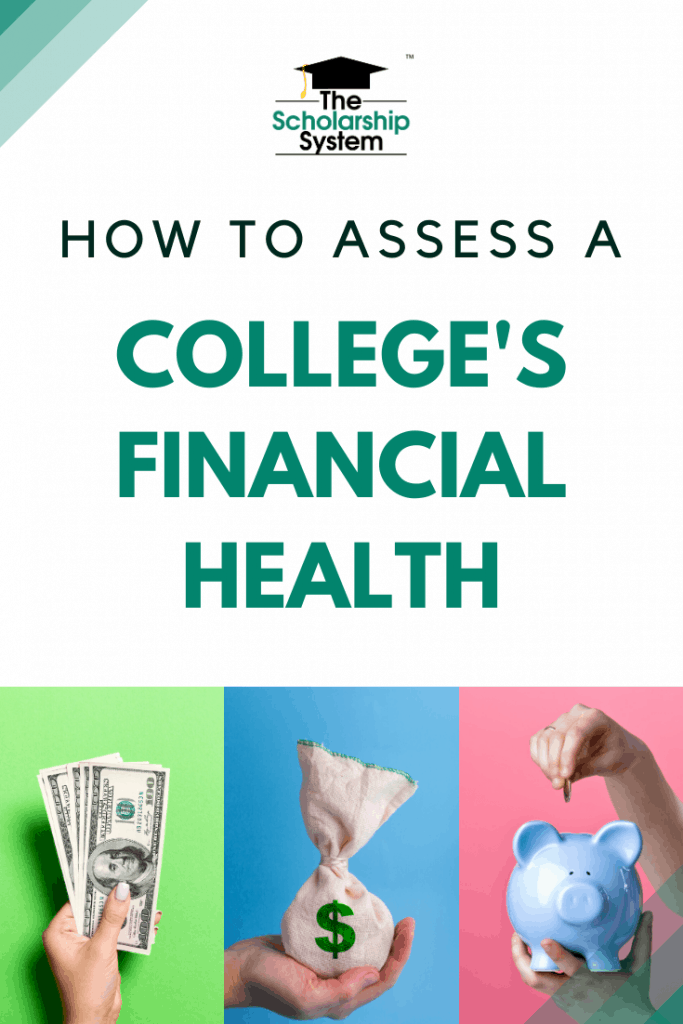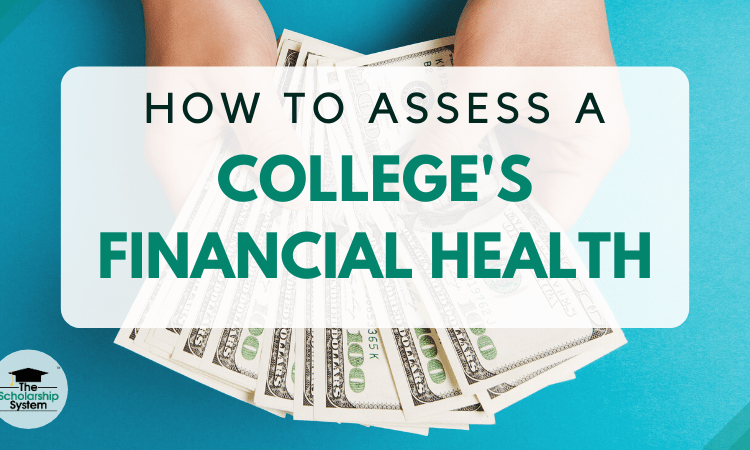Updated on July 18th, 2022
For many students and parents, checking a college’s financial health may seem unnecessary. After all, plenty of institutions have been around for a long time and are integral parts of their communities. It’s easy to assume there aren’t any questions of solvency, so most don’t bother to check.
However, the age of a college or its position in its community doesn’t guarantee financial health. This is especially true after the COVID-19 outbreak forced schools to halt in-person classes and empty their dorms. Many colleges rely heavily on room and board fees to supplement tuition, ensuring the school can cover operational costs. Without students on campus, a significant source of income vanished.
Pandemic aside, many colleges and universities face financial challenges. These can impact the quality of the education they offer and the resources available to students. As a result, it’s wise to explore whether a college is financially healthy.
If you and your student want to learn about how to find scholarships, ensuring that their ideal school is affordable, sign up for our free college scholarship webinar! Take a trip over to https://thescholarshipsystem.com/freewebinar to reserve your spot today.
Contents
How to Check a College’s Financial Health
Determining whether a college is financially healthy isn’t easy. There isn’t a single report that will tell your student everything they need to know. Instead, a bit of research is required.
If your student is ready to dig in, here are some places to look for clues about a college’s financial health.
1. College’s Financial Health Online Details
Many schools do post some details online that give insights into the institution’s financial health. Most commonly, this is in the form of annual financial reports. Harvard, for instance, makes its reports readily available online, and it isn’t the only school to take that step. By doing a quick online search featuring the school’s name and “annual financial report,” your student can likely find that information (if available) with ease.
However, it’s important to understand that interpreting some of that data isn’t easy. This is especially true because the reports don’t always break down the data in intuitive ways. That’s just the nature of these reports, but it doesn’t mean they aren’t worth a look.
Additionally, there can be other types of information that helps. For instance, overviews about financial aid awards can provide some clues to how the school is doing, albeit a bit indirectly.

A college’s financial health impacts the quality of the education it offers and the resources available to students. Here’s how to see how a school is doing.
2. Student Enrollment Trends
Seeing how enrollment has shifted over the years can provide indications about a school’s financial stability. If the number of attendees is relatively steady or trending upward at a reasonable pace, that could be a positive sign. A decline – whether dramatic or steady – could be a red flag.
Similarly, the percentage of the student body that is comprised of international students can provide clues about a college’s financial health. Typically, international students pay full price to attend, so schools may rely heavily on them to balance their budgets. Changes in those metrics are worth reviewing.
During the coronavirus outbreak, many schools had to eliminate in-person classes quickly. The aftereffects of the pandemic will likely be long-term, and may fundamentally alter how students attend college for some time. If prior to the pandemic, online enrollment was low, it could show that a school didn’t have many resources in that area. As a result, the college’s financial health may suffer in the near future because supporting online-only students may be challenging, requiring them to limit enrollment.
If your student wants to review this kind of information, the school’s Common Data Set overview is an excellent resource.
3. Reviews from Current Students and Recent Graduates
Students who currently or recently attended classes at the school (especially those who lived in a dorm) can be excellent resources. While they might not know financial details about the college, they have firsthand knowledge about the state of the school. For example, they may be able to tell your student about:
- Building conditions
- Availability of resources and amenities
- Overall cafeteria food quality
- Campus cleanliness
- Current construction or expansion
- And more
Facilities in disrepair, cleanliness issues, and a lack of resources could all indicate a problem. In contrast, expansion plans, new construction, no repair issues, and good food quality might show that a college is financially in good shape.
4. Massive Changes to Tuition Rates
If a school suddenly makes substantial tuition discounts available, it could be an attempt to entice more students into enrolling. At times, this could signal the college is experiencing some kind of difficulty, potentially a financial one. It might be trying to lure in more applicants with its low prices in hopes of overcoming a shortfall.
5. Local Economy Metrics
The financial health of the local community is a factor worth exploring. If the surrounding city or town is thriving, there’s a better chance the school is, too. If the nearby area is struggling, then the college might be, as well.
Usually, you can learn a bit about the local economy by reading the city’s or town’s newspapers online. Typically, local media focuses a decent amount of attention on their region, so your student might gain some valuable insights.
6. School and Employee Communications
Often, schools are legally obligated to discuss financial issues with students. This could come from standard communications, like email newsletters or social media posts. However, your student could also reach out to the admissions office and ask, as there is a good chance they’ll learn some helpful information.
Additionally, social media posts from college professors and other employees may provide your student with some clues. Talking about hiring freezes, layoffs, or salary reductions are all signs of potential trouble, so they shouldn’t be ignored.
Making College Decisions Based on a College’s Financial Health
Many students struggle with choosing a college. By factoring in a college’s financial health, that process may be easier. It adds another aspect that may separate what become top choice schools from the rest, particularly if the disparity is significant.
However, financials should only be part of the picture. As long as a school can reasonably afford to support your student’s ideal learning environment, that’s enough. They don’t have to skip that for a college that is stronger financially if their first choice isn’t struggling.
Ultimately, analyzing a college’s financial health is a method for identifying red flags that could indicate potential trouble. If those warning signs aren’t there, then keeping a school in contention is typically fine.
If you and your student want to learn about how to find scholarships, ensuring that their ideal school is affordable, sign up for our free college scholarship webinar! Take a trip over to https://thescholarshipsystem.com/freewebinar to reserve your spot today.






Leave a Reply